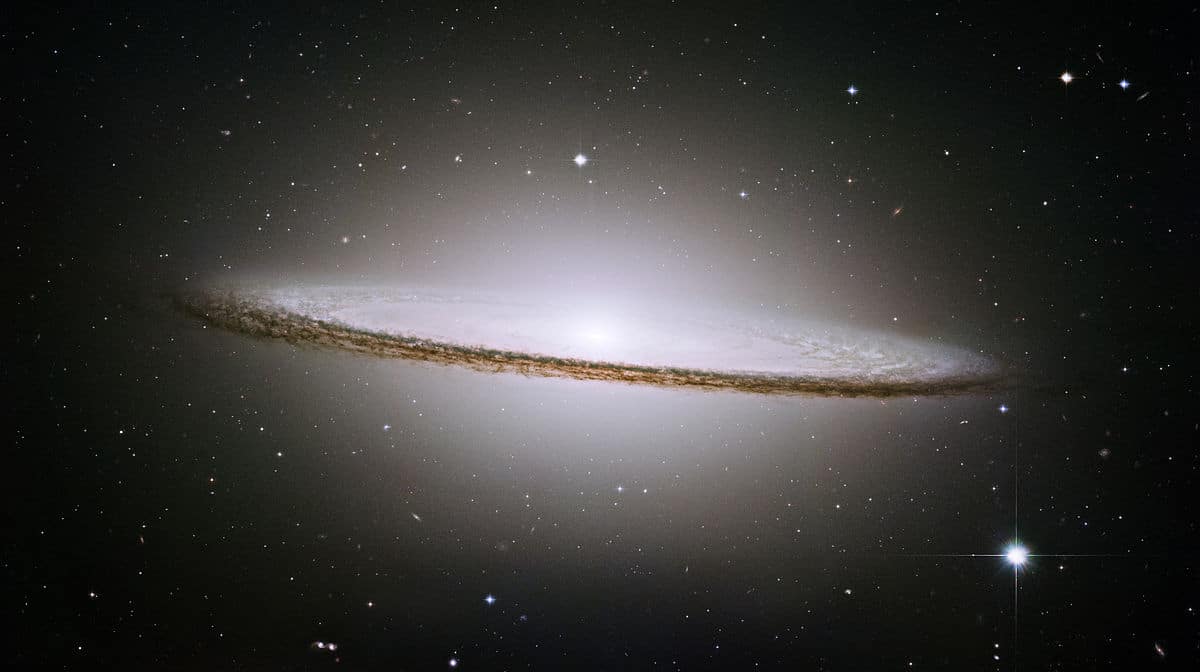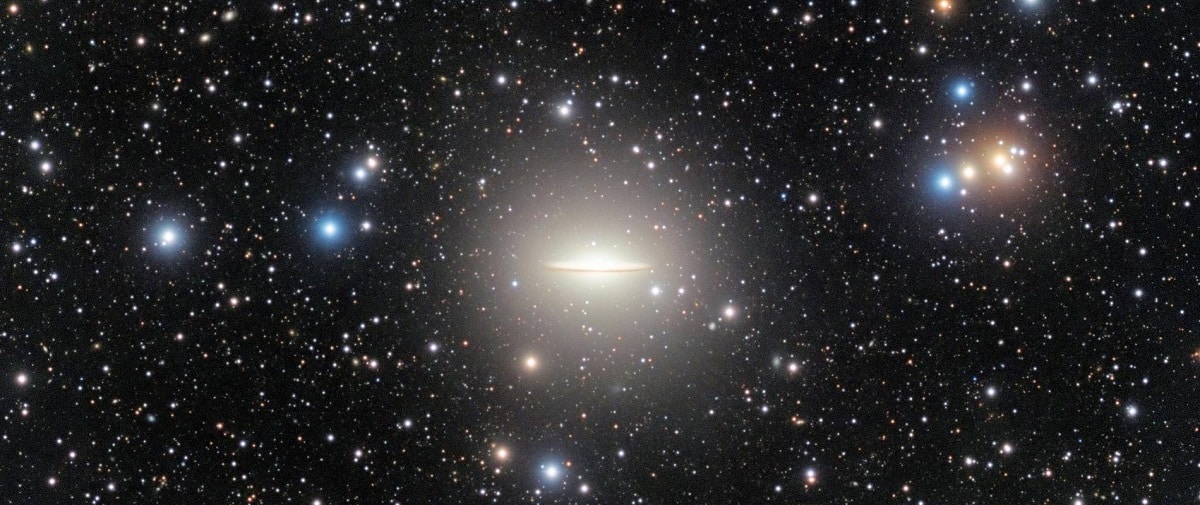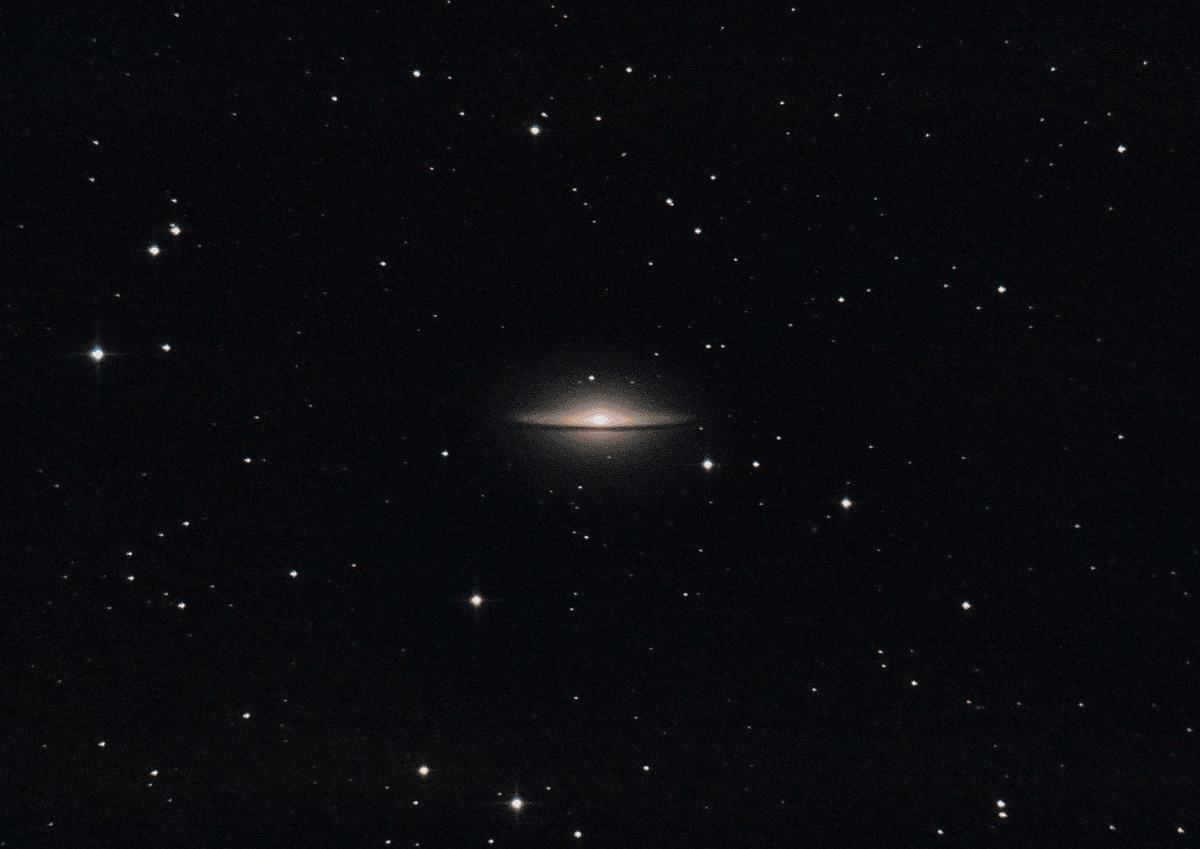
As we know, there are numerous types of galaxies throughout the universe. Each type of galaxy has unique characteristics and a special shape. In this case, we are going to talk about the Sombrero Galaxy. Also known as the Messier 104 galaxy, the Sombrero Galaxy, nearly 30 million light-years away, gets its name from its unusual shape and is one of the most famous lenticular galaxies.
In this article we are going to tell you everything you need to know about the Sombrero galaxy, its characteristics and curiosities.
What is the Sombrero Galaxy?

The Sombrero Galaxy is a lenticular galaxy 28 million light-years from Earth. From ground level it is observed from the edge, and a large ring filled with dark dust and a prominent well-defined core can be resolved, but many times it does not look well defined with the naked eye, and some things are small A telescope will do the trick.
It is a lenticular galaxy, that is, it is lens-shaped and does not have spirals, since it is not producing stars. It consists of a core with a chiseled disk around it, albeit with a lot of dark dust. Its diameter is from 50.000 to about 140.000 light years. Its apparent size (as seen from Earth) is 9 x 4 arc minutes, a fifth of the 30 of the Moon and a mass of more than 800.000 suns, or twice that of the Milky Way.
Recent NASA research has shown that the Sombrero Galaxy is brightest within a radius of 10 Mpc. Its stars are extremely bright and are classified as a Type II group because they are known to be very old, but the stars in the dark dust around them are young.
Furthermore, this galaxy is home to a surprising number of globular clusters; in its radius there are about 2.000 clusters, between 25.000 and 70.000 light years; quite different from the 200 clusters that make up the Milky Way
Other studies have suggested that it may have a supermassive black hole at its center, with a mass of about 1.000 million suns (250 times greater than the center of the Milky Way), causing it to leave the Earth at an astonishing speed, specifically 1000 km. /s, making it visible The center of the universe with the greatest volume and mass.
More about the Sombrero Galaxy

Name
Looking at images of the galaxy or looking at it through a telescope, it becomes clear why it is called the Sombrero Galaxy. This is because when looking at it, only the edge of the disk can be resolved, with a tilt of about 6 degrees and its prominent bulge composed of a large number of stars, they form what looks like a Mexican hat.
However, the scientific name that astronomers use to call it is not the Sombrero Galaxy, but they managed to identify it with several names:
- Messier 104
- Messier Object 104
- M104
- NGC 4594
It is called Messier because it was the first to join the Messier Catalog after its creation.
Site
It lies between the constellations of Virgo and Corvus, next to Spica (part of Virgo), which is used to locate the Sombrero Galaxy. Its right ascension is 12 hours, 39 minutes, 59,4 seconds, and its declination with respect to the plane of the Milky Way is -11° 37´23¨. It is easy to see with a simple telescope, but it is not considered to be the Virgo cluster (the collection) since it is further south of it .
Discovery of the Sombrero Galaxy

The galaxy was first discovered time in 1781 and announced in May 1783 by the same scientist who discovered it, the Frenchman Pierre Méchain. It was the first celestial body added to the Messier catalog after the publication of the Messier catalog and was independently discovered by the German Wilhelm Herschel on May 9, 1784, one year after publication.
However, the French astronomer Charles Messier did not add it to his personal list as a galaxy, instead describing it as a dim nebula, later regretting it and calling it a galaxy, giving it the designation M104. A baptism was performed.
Astrophotography
Existing images of this galaxy were taken by two extremely important telescopes well known in the astronomical community, the Hubble Space Telescope and the Subaru Space Telescope.
Photos are taken in visible and infrared light, and are even programmed to reveal details invisible to the naked eye, combining photos of the same type (visible-visible/infrared-infrared) and different types (visible-infrared ) to get as many details as possible.
Other features of the Sombrero Galaxy
Viewed from the side, this spiral galaxy, cataloged as galaxy NGC 4594, is highlighted by a dark band that appears to bisect its length, made up of massive dark clouds. The Sombrero Galaxy is twice the size of our own. If we could look at ours the same way, it would be similar to the one in the hat. The galaxy is in the constellation Virgo, although it is not considered a member of the Virgo Cluster.
Recent studies make it the brightest galaxy within a radius of 10 Mpc, with a proper absolute magnitude of -22.8.2. M104 is between 50.000 and 140.000 light-years across.. It has a mass of about 800.000 million suns. M104 is also rich in globular cluster systems, with large telescopes seeing at least several hundred globular clusters, estimated at 2000 or more, far more than the number of star clusters orbiting the Milky Way. Recent images show that the galaxy has a large galactic halo.
Reasons include the large cluster of stars towards the central region of the galaxy and the prominent rim of dark dust surrounding the galaxy, viewed from the side from our perspective. Billions of ancient stars are responsible for M104's massive central glow, and a closer look at the ring reveals complex structures astronomers still don't understand. It also appears to have a 109 solar mass black hole at its center. New research with the help of the Spitzer Infrared Telescope suggests that M104 may be, in fact, a giant elliptical galaxy that in the past, about 9 billion years ago, it captured matter that formed a disk embedded in it that evolved into what we see today.
I hope that with this information you can learn more about the Sombrero galaxy and its characteristics.